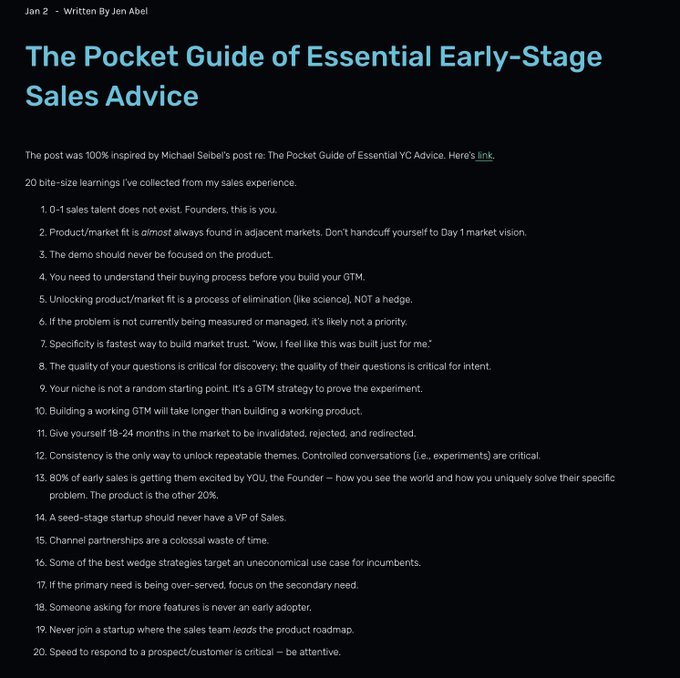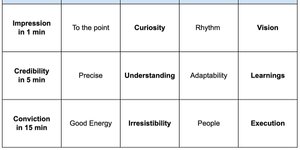Building 0-1
The best lead generation companies usually have some combination of a distinguished and highly trusted brand and a proprietary channel or value proposition they use to acquire customers that competitors cannot replicate. These companies typically have staying power and defensibility, are highly differentiated, and immensely more valuable than... See more
Marketplaces, Lead Generation, and Brokerages

I don't have any 2024 startup predictions, but I do have a pocket guide for you ...
This was 100% inspired by YC's pocket guide.
H/T @mwseibel
One of our theories is to seek out opportunities where there’s a major change. Major dislocation in the way things are. Wherever there’s turmoil, there's indecision. And wherever there’s indecision, there’s opportunity. So we look for the confusion when the big companies are confused. When the other venture groups are confused. That’s the time to... See more
Rex Woodbury • Seed Investing: The State of the Union

As you build newthing you will discover that building a newthing is a strange act where the harder you go about trying to do it, the harder it becomes. It will resist direct force and control. The more you relax and allow it to speak through you, however, the easier it will be.
There is no heaven for newthings. There is no Hall of Fame. There is only memory and change. Nothing (the opposite of newthing) and no one are immune.
The goal of newthing is to live as long as possible while staying true. The longer it does this, the stronger and more itself it will become.
The goal of newthing is to live as long as possible while staying true. The longer it does this, the stronger and more itself it will become.
The fact that there is a newthing has come to feel like a certainty, even as we cannot fully perceive it. This will spark a search for underlying structures, analogs, and ways of being that feel natural to this newthing.
Does the newthing exist in this context or some other one?
Is it a newthing that’s meant to run all the time or is it more seasonal... See more
Does the newthing exist in this context or some other one?
Is it a newthing that’s meant to run all the time or is it more seasonal... See more
A reproducible testing process is more valuable than any one idea. Innovate here first.
All things equal, a team with more shots at bat will win against a team with an audacious vision.
Nikita Biertwitter.comStartups often assume their better funded competitors are doing well, which leads to dogmatically chasing/copying #1 if you’re #2+
#2 tries to catch up to #1 by running the same way but faster. It’s often the case #1 is headed in the wrong direction, and now #2+ is too
Braden Reamtwitter.com